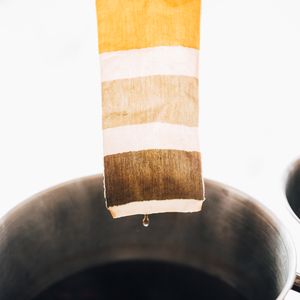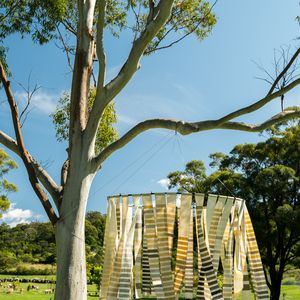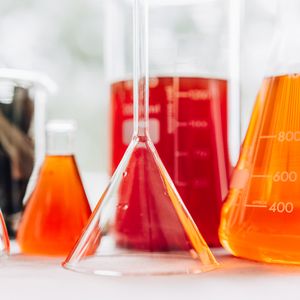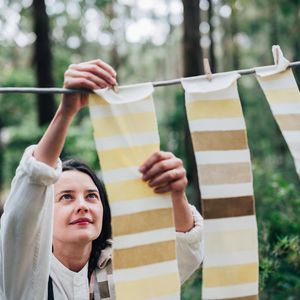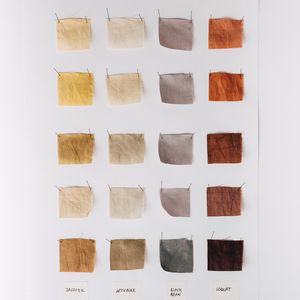Joanna Fowles
Good Natured - Art
GOOD NATURED: design art architecture celebrates creative projects by designers, artists and architects working to design a better future. These practitioners are focussed on creating outcomes that are both beautiful and good for the planet.
About Joanna Fowles
Joanna Fowles is a Sydney based textile artist who works with nature and traditional dying methods to create contemporary fabrics for the future. Her practice is seamlessly circular in sustainability. Joanna also teaches and holds workshops to encourage sustainable textile and creative practice.
Joanna Fowles creates dyes from plants foraged in her local environment. She draws on her experience as a natural dye practitioner to select plant materials based on her knowledge of plants and dyes, seasonal availability, and an understanding of the locations of materials.
Her dye practice operates on a small and local scale. She aims to redesign and reinvent a new type of dye stream using circular design principles. Focusing ‘geo locally’ means that she can respond to specific localities for biological colourants from local material waste streams. The colour palettes that she creates are determined by the materials sourced and the local environment.
We have selected Joanna for GOOD NATURED as a standout exemplar for how the enormous challenges of textile dye production and waste can be addressed through creative practice.
Connect with Joanna: @joannafowles joannafowles.com
Joanna's Projects
For the exhibition project on display, Madder Fragments, Joanna worked with Nina Smith. Madder (rubia tinctorium), a natural pink dye, was planted and grown. After two years, the roots were harvested and used as a dye. Fowles and Smith collaborate regularly to address issues of waste within the fashion and textile industry. Madder Fragments started as a dialogue between the designers after Fowles identified she had amassed many 'waste' or 'imperfect' swatches from her natural dye practice. Instead of discarding these fragments, Smith gathered and compiled the fragments into a geometric composition that shows the variations in tone, texture and colour from one locally grown plant source of colour.
The Kembla Grange Cemetery project responded to the cemetery site by identifying and foraging for plant materials to create a location-specific colour code of the site. The final installation consisted of 36 hand-painted and dyed panels of different plants from the 40 hectare location in Wollongong. The panels were suspended from a large circular hoop suspended from a tree on the Wollongong Cemetery site.
Joanna's Good Natured Action
Visit the exhibition at Australian Design Centre to pick up a dye swatch ready for you to dye at home with materials you collect from your local environment. Instructions can be downloaded here.

